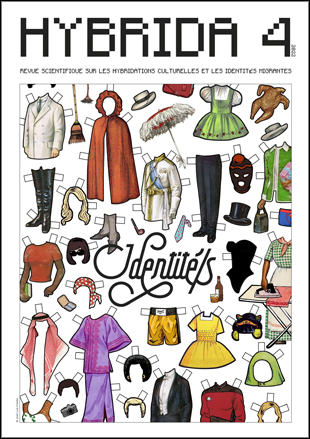Between city-centre and suburb: back and forth through ultra-contemporary audiovisual materials
DOI:
https://doi.org/10.7203/HYBRIDA.4.23675Keywords:
space, passage, suburb, identity Abstract
Abstract
French banlieue constitutes a privileged space to study the evolution of French identity in the 21st century because of its political planning and its social status and configuration. Considering the films Le Brio (2017) and Les misérables (2019) and the series Marseille (2016) as a starting point, this article tries to analyze how contemporary fiction shows existent tensions between dominant and dominate worlds. At the same time, it will also focus on the intensity from the dominant point of view in these audiovisual productions. Through the perspective of a series of characters that constantly cross the inside-outside border, suburbs and downtown will became nearer than ever imagined. This will lead to ask oneself about the accuracy of certain clichés usually attributed to these spaces.
 Downloads
Downloads
 References
References
Attal, Y. (Réalisateur). (2017). Le Brio [Film]. Chapter 2 ; France 2 Cinema ; Moonshaker ; Nexus Factory ; Pathé Productions Ltd et Umedia.
Barthes, R. (2002). Œuvres complètes. Tome II (1962-1967). Éditions du Seuil.
Bourdieu, P. (1994). Stratégies de reproduction et modes de domination. Actes de la recherche en sciences sociale. Stratégies de reproduction et transmission des pouvoirs, (105), 3-12. https://www.persee.fr/doc/arss_0335-5322_1994_num_105_1_3118
Butler, R. & Noisette, P. (1977). De la cité ouvrière au grand ensemble. La politique capitaliste du logement social (1815-1975). Petite collection Maspero.
Cello, S. (2017). Traverser les banlieues littéraires : entre sensationnalisme et banalité quotidienne. Itinéraires, (2016/3-2017). https://doi.org/10.4000/itineraires.3595
Chibane, M. & Chibane, K. (2003). Le cinéma post-colonial des banlieues renoue avec le cinéma politique. La Découverte, (27-28), 35-38. https://doi.org/10.3917/mouv.027.0035
Fourcaut, A. (2000). Pour en finir avec la banlieue. Géocarrefour, 75(2), 101-105. https://doi.org/10.3406/geoca.2000.2518
Franck, D. (Créateur). (2016-2018). Marseille [Série]. Netflix et Federation Entertainment.
Hugo, V. (1963). Les Misérables. Éditions Garnier Frères.
Ly, L. (Réalisateur). (2019). Les Misérables [Film]. Lily Films ; Rectangle Productions ; Srab Films ; Canal+ ; Le Pacte ; Ciné+ ; Wild Bunch ; Lyly Films ; Région Ile-de-France ; Cinéfeel ; CNC ; Cinéventure ; Arte Cofinova et Cinémage 12 Développement.
Merlin, P. (2010). Les grands ensembles. La Documentation Française.
Milleliri, C. (2011). Le cinéma de banlieue : un genre instable. Mise au point, (3). https://doi.org/10.4000/map.1003
Mottet, J. (2001). Entre présent et possible : la difficile recomposition du paysage de la banlieue dans le film de Mathieu Kassovitz, La Haine. Cinémas, 12(1), 71-86. https://doi.org/10.7202/024868ar
Tamayo, S. & Cruz, X. (2006). Espacio etnográfico, hermenéutica y contexto socio-político: un acercamiento situacional. In P. Ramírez Kuri & M. Aguilar Díaz (Coords.), Pensar y habitar la ciudad. Afectividad, memoria y significado en el espacio urbano contemporáneo (pp. 175-195). Anthropos Editorial.
Downloads
Published
How to Cite
-
Abstract387
-
PDF (Français )284
Issue
Section
License
![]()
All the documents in the OJS platform are open access and property of their respective authors.
Authors publishing in the journal agree to the following terms:
- Authors keep the rights and guarantee HYBRIDA the right to be the first publication of the document, licensed under a Creative Commons license Attribution-NonCommercial-ShareAlike 4.0 International (CC BY-NC-SA 4.0) that allows others to share the work with an acknowledgement of authorship and publication in the journal.
- Authors are allowed and encouraged to spread their work (once published) through electronic means using personal or institutional websites (institutional open archives, personal websites or professional and academic networks profiles) once the text has been published.
















